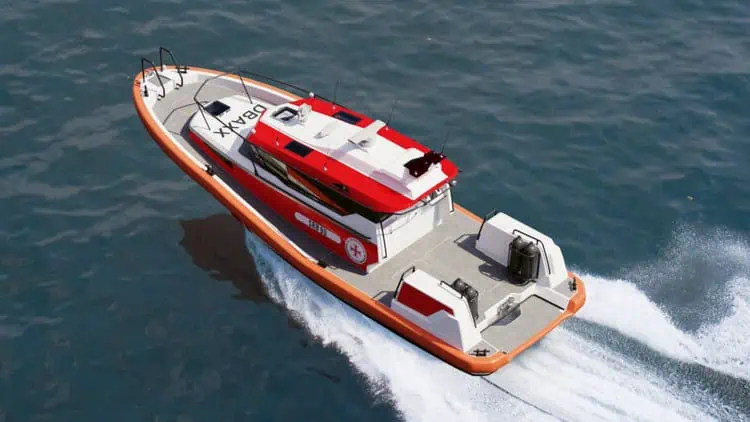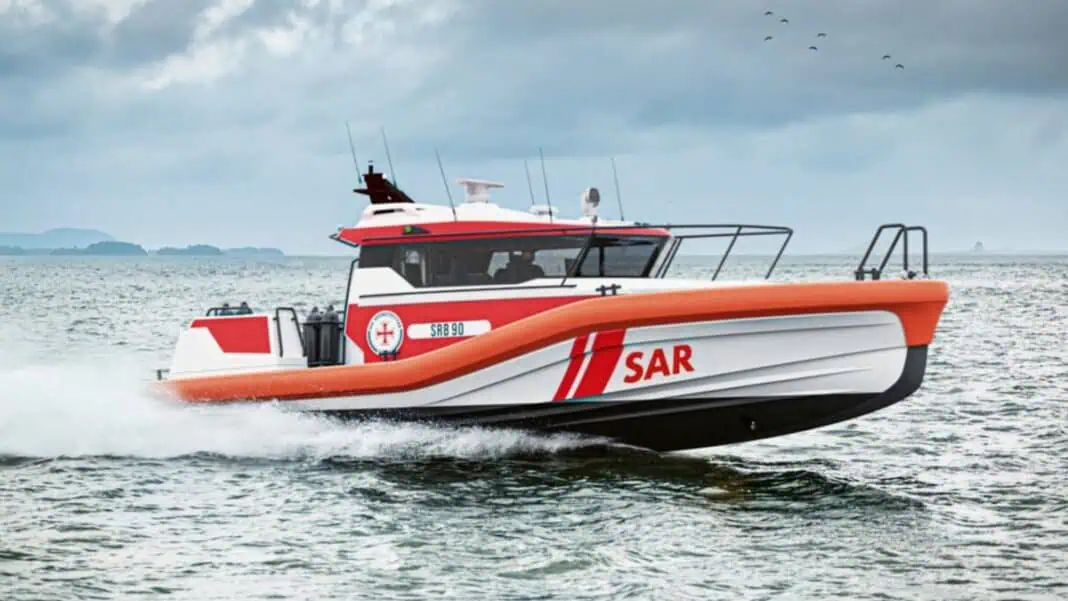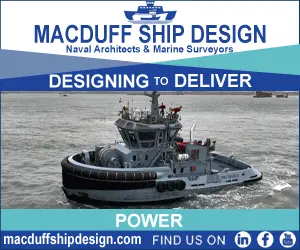The German Maritime Search and Rescue Service (DGzRS) has commissioned the construction of a prototype for a new class of sea rescue boat, designed specifically for use at volunteer stations in the North and Baltic Seas.
This specialized vessel, measuring just over 12 meters in length and capable of reaching speeds of approximately 34 knots, is scheduled for delivery in 2026. Once completed, the DGzRS will conduct extensive testing at various stations to evaluate its performance and ensure it meets the rigorous demands of maritime search and rescue operations.
In the foreseeable future, the first units of the proven 9.5/10.1-meter class, commissioned between 1999 and 2002, will reach the average service life of approximately three decades for DGzRS units. More than 30 sea rescue boats of three generations of this extremely seaworthy, robust, and manoeuvrable special-purpose vessel are in service. The DGzRS addressed the question of how to replace them early on.
After extensive preliminary considerations, it has been decided: the existing type will not be further developed, but rather a completely new class of sea rescue boat. In addition to the characteristics typical of all DGzRS units – self-righting capability, high seaworthiness, and operational capability on the open sea as well as in shallow coastal waters, thus requiring a correspondingly shallow draft – the sea rescuers have formulated three essential additional requirements:
- Separation of the drive train from the control station to create even quieter working conditions for the crew and to facilitate the handling of the rescue stretcher, as the shipwrecked/injured do not have to be climbed over the engine room before reaching the protected interior;
- State-of-the-art communication and navigation systems, but also simple and intuitive to operate, robust and redundant systems – this also applies to the drive system;
- Improved manoeuvrability and significantly higher speed without reducing the usual high seaworthiness.

After intensive project work, the DGzRS has signed a shipbuilding contract with Arctic Boats Oy of Finland based on their design. The new sea rescue boat will be a good twelve meters long. The DGzRS has not yet determined the exact class designation.
A twin-jet propulsion system with proven Cummins engines provides a top speed of over 30 knots and a cruising speed of over 25 knots, depending on weather and sea conditions. Both propulsion systems can be operated completely independently (full redundancy). Twin waterjet propulsion systems enhance maneuverability in all conditions.
The new type of sea rescue boat is made of glass- and carbon-fiber-reinforced plastic (GFRP/CFRP). Compared to the previously used aluminum, this material is also robust, but even lighter, more cost-effective to build and maintain, and easier to process and maintain. It also allows for completely flexible design of all spaces on board.
The deckhouse will be fully elastically mounted to further reduce noise in the control station. For the first time, suspended seats will be provided for the entire crew. Tests on a full-scale wooden mockup have confirmed the desired excellent all-round visibility in the control station. Extremely robust special safety glass, similar to that used on sea rescue cruisers, will be installed.
There will still be a room in the foreship for the care and medical treatment of shipwrecked people. Ample open space is provided on deck for the storage and safe handling of rescue equipment. Rescue of shipwrecked people directly from the water will be carried out via a low-lying rescue platform at the stern. The surrounding fender system will be accessible. Various rope systems will secure the sea rescuers during work on deck.
A positioning system automatically keeps the new lifeboat in position. This allows the foreman to switch from the inside to the outside maneuvering position, for example, during rescue from the water or when maneuvering around a stricken vessel or in port.
Preliminary technical data
- Length: 12.75 meters
- Width: 4.18 meters
- Draft: 0.76 meters
- Displacement: 11.5 tons
- Power: 2 x 425 hp on jets
- Speed: 34 knots
Calculations show excellent seakeeping performance for the new rescue boat. Corresponding tests in a test tank affiliated with Aalto University in Espoo near Helsinki have confirmed this.
Initially, a prototype will be built in Finland by Arctic Boats Oy in collaboration with Boomeranger Boats (hull lamination) and WD Steelworks (outfitting) under the DGzRS internal registration number SRB 90. Its capsize test is scheduled for spring 2026. The new sea rescue boat will then be thoroughly tested at numerous DGzRS stations in the North and Baltic Seas before – if all tests are successful – going into production.













